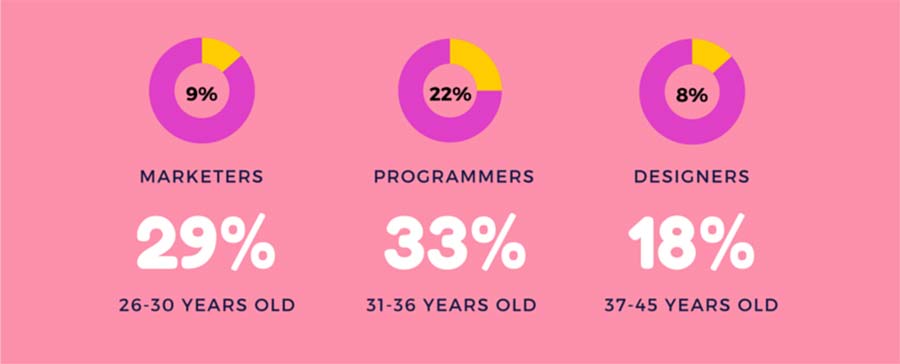A digital nomad is no longer a phrase that raises eyebrows. Once tech-world jargon, the expression is now everywhere, with blogs springing up left, right and centre promising to teach you how to attain the digital nomad lifestyle. And it’s a seductive name, suggesting some futuristic guru roaming around in cyber-space.
The alternative title – telecommuter – sounds a lot more mundane. And the reality of digital nomadism is not that other-worldly either. Digital nomads are essentially remote workers, using their computer to work from places other than the office: exotic tropical island, Paris, city of love, or, indeed, bed.
Perhaps the first digital nomad was Steve Roberts who, in 1983, set out to travel 16,000 miles around the USA on a recumbent computerised bicycle. While peddling around the country, Steve also maintained a full-time writing job. Just imagine. This was the ’80s. Most people were sitting at desks in suits and ties. Steve was whizzing round the country on a bike and getting paid to do so. It was a radical, revolutionary idea.
Today, with the internet becoming reliable and widespread even in the most rural and remote areas, jobs are becoming less and less office-bound. This, combined with a growing acceptance of the concept, has contributed to the increasing popularity of digital nomadism.
And we hear all sorts of incredible things about the digital nomad lifestyle. Remote workers are purported to enjoy increased productivity, increased happiness, and even improved health. It seems win-win for everyone. But is this the whole picture?
Here are 7 statistics about digital nomads that may surprise you:
1 – What does your standard digital nomad look like?
Most people would imagine digital nomads to be energetic 20-year-olds, zipping across the globe with their MacBook Pros. But, interestingly, that isn’t the profile of your average remote worker. In fact, 33% of remote workers – the majority – are 31-36 years old, slightly older than you might expect. Furthermore, most of them only visit between 5 and 10 countries each year, staying in each place for 1 to 3 months. This isn’t exactly a life on the road. Only 9% of those surveyed visited over 10 different countries in a year.

Source: Welance
2 – What are the best things about being a digital nomad?
If social media is anything to go by, exploring far-flung destinations, swimming in plunge pools and enjoying spectacular sunsets are the main reasons people want to work remotely. But in reality, only 12% of digital nomads said that the ability to travel was the biggest benefit to remote working. Indeed, nearly half of the remote workers asked to spend only 10% or less of their year travelling.
Instead, flexibility ranked as the greatest benefit to remote working, at 43%. It seems to be able to choose your schedule, your projects, and your workload is more important than jetting off across the world. Surprising, but understandable perhaps, given that flexibility was followed by the ability to spend time with your family – something 15% of workers claimed to be the best thing about remote working. For many, quality time with your loved ones beats living beachside in Thailand.
3 – What’s the biggest struggle for remote workers?
This one was a draw. Both loneliness and the difficulties of collaborating and communicating ranked highest for digital nomad woes, both at 21% of answers. Indeed, they are essentially two sides of the same coin – we take more pleasure in working with our colleagues than we realise.
Meanwhile, only 16% of workers argued that distractions were the biggest problem they faced – less than you might imagine, but supporting other evidence that remote workers boast improved rates of productivity than office workers.
After that, the difficulties of coordinating time zones accounted for 13% of workers’ problems, while finding reliable Wi-Fi was an issue for only 8% of nomads – a sure sign that this really is the Age of the Internet.

4 – What about a holiday?
Isn’t every day a holiday for a digital nomad? Apparently not. Most remote workers (21%) take between 11 and 15 days of holiday a year – which is not a lot. While it’s roughly the same as most private-sector workers in the US – where the average number of paid vacation days is 16 – it’s a huge step down for European workers: Italians, Belgians, the French, Spanish and German all get 30 days or more paid holiday, as do workers in New Zealand. Suddenly the digital nomad lifestyle doesn’t look quite so sunny.
Source: Buffer

5 – Are co-working spaces the hot new trend?
Actually, no. Co-working spaces really aren’t that popular – only 7% of workers choose to use them. Instead, 78% work from home. Probably a combination of reliability, Wi-Fi, convenience, and money. Working from home saves on transport, coffees in cafes, and membership of a co-working space. And it’s not surprising that money is a factor when we consider statistic number 6…
Source: Buffer

6 – How much do digital nomads earn?
Money – the billion-dollar question. And, unfortunately, it’s not a billion-dollar answer. The sad reality is that the majority of remote workers (28%) make less than $25,000 per year, roughly half the US average salary. This means money shouldn’t be a motivating factor if you are considering switching to the digital nomad lifestyle – because you are not going to be raking it in.
However, it is worth noting that 19% of workers, the next biggest salary group, earn between $50,000 and $75,000 a year – a huge step up. Meanwhile, 13% were extremely big earners, at $125,000 a year. The conclusion to this seems to be: if you succeed at digital nomading, you really succeed.
Source: Buffer

7 – What is the outlook for digital nomads?
To end on an uplifting note, the positives certainly seem to outweigh the negatives for digital nomads. 90% of remote workers plan on working remotely for the rest of their careers, while 94% encourage others to try remote working.
Source: Buffer

So, overall, it seems the life of a digital nomad isn’t as simple as rolling out of your hammock to casually blog a few high-performing articles with a view of the ocean. Or running an award-winning start-up from a Colombian coffee shop, macchiato in hand.
The reality can be a lot less glamorous and the perks are not always what you expect. Plus, digital nomads are generally young and we don’t yet have the statistics to tell us how this lifestyle will suit people later in life. Unreliable income and lack of stability become less appealing as you get older. Make sure you have your virtual company set up in such a way as to maximise your earnings.
If the digital nomad lifestyle is going to continue to grow, some things will have to change. Investment in co-working spaces that are reliable, accessible and cheap is vital to combat the isolation of working alone. Remote workers also need proper salaries and support from their company or employer so that they feel secure in their work. And this includes holiday days. Because it’s no fun working from a beach if you have to spend every hour of every day staring at a computer screen. You need days off, otherwise, it’s just an office with sand, and no one wants that.
If you are interested in becoming a digital nomad, Nomad Girl has a great article on the countries that have visas and programs for digital nomads.


















